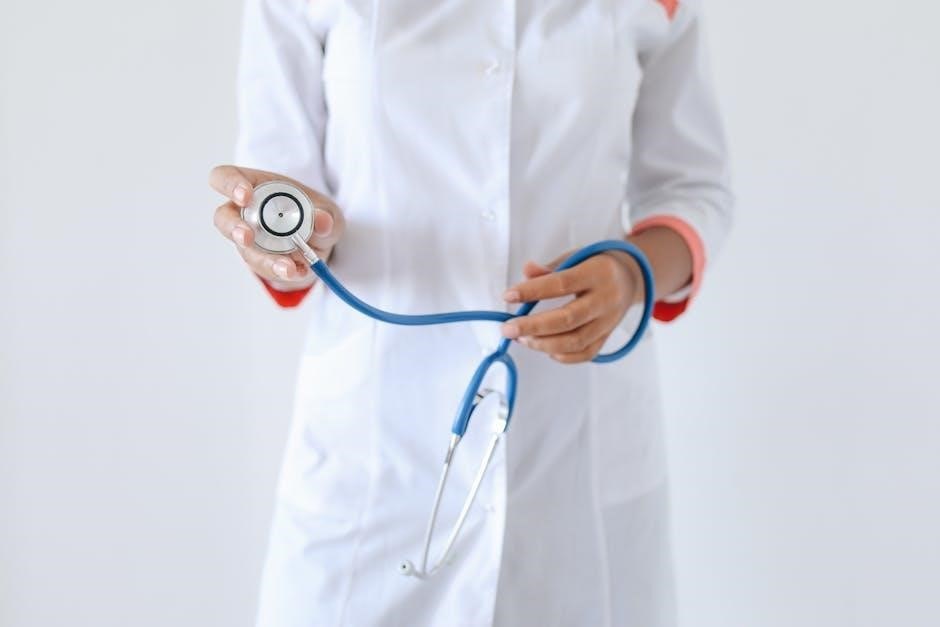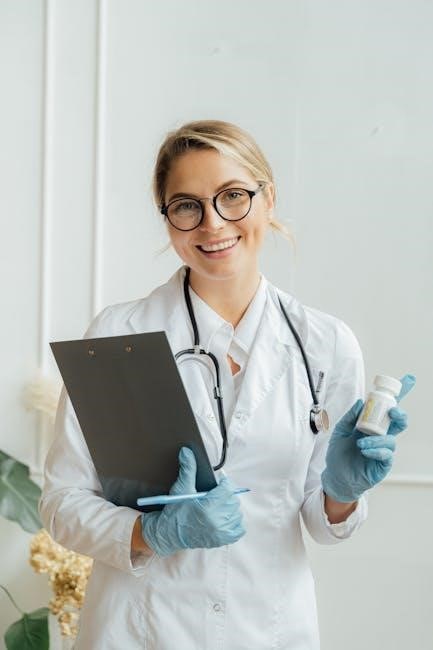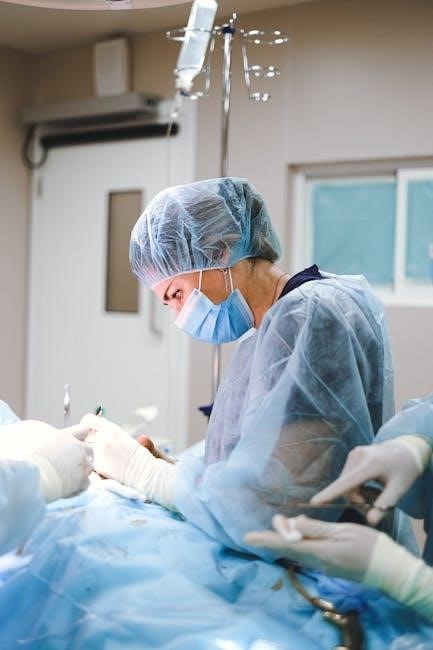Bowel Cleansing with Polyethylene Glycol: A Nurse’s Instructions
As your nurse, I’ll guide you through your colonoscopy preparation using polyethylene glycol. This cleansing is vital for a clear colon view. Follow these steps carefully to ensure the procedure’s success. Remember, clear bowels are essential for accurate results during your colonoscopy examination.
Hello, I’m here to explain about Polyethylene Glycol, often called PEG, which is essential for your upcoming colonoscopy. PEG is a medication used to thoroughly cleanse your bowel before the procedure, ensuring the doctor has a clear view of your colon lining. It’s a critical step, so understanding how it works will help you prepare effectively.
PEG works by drawing water into your intestines, softening the stool and promoting bowel movements. This process helps remove any residual waste or debris from your colon. The goal is to achieve complete evacuation, leaving your colon clean and ready for examination. Adequate preparation is key to an accurate diagnosis.
PEG is considered a safe and effective method for bowel preparation, and it is widely used for colonoscopies. Remember, following the instructions carefully is paramount to achieving optimal results. This includes adhering to the specified diet and timing of the PEG solution. Proper preparation allows for a comprehensive colonoscopy.

Purpose of Bowel Cleansing Before Colonoscopy
Bowel cleansing, particularly using PEG, is a crucial step before your colonoscopy. The primary reason for this thorough cleansing is to ensure a clear and unobstructed view of the colon lining. Any remaining stool or debris in the colon can obscure polyps, lesions, or other abnormalities, potentially leading to missed diagnoses.
A colonoscopy allows the doctor to examine the entire length of the colon, searching for any signs of disease, such as colon cancer or precancerous polyps. If the colon is not adequately cleaned, these abnormalities may be hidden, compromising the accuracy of the examination. Therefore, bowel preparation is essential for a successful colonoscopy.
Adequate bowel cleansing also reduces the need for repeat colonoscopies, saving you time, money, and potential discomfort. By following the preparation instructions carefully, you contribute to the success of your procedure and ensure the most accurate assessment of your colon health. A clean colon ensures a thorough examination by the physician.
Mechanism of Action of PEG
Polyethylene glycol, or PEG, functions as an osmotic laxative to cleanse your bowel. PEG is a large, water-soluble molecule that the body doesn’t absorb. When you ingest the PEG solution, it draws water into the colon from the body’s tissues. This increased water content softens the stool and increases the volume of fluid in the bowel.
The increased fluid volume stimulates bowel contractions, also known as peristalsis. These contractions propel the softened stool and fluid through the colon, effectively flushing out its contents. Because PEG isn’t absorbed, it continues to draw water into the colon throughout the process, ensuring thorough cleansing. The combination of increased fluid and stimulated peristalsis leads to diarrhea, which is the desired effect for colonoscopy preparation.
It’s crucial to drink the entire prescribed amount of PEG solution to achieve optimal cleansing. The goal is to evacuate all solid waste from the colon, leaving only clear liquid behind. This clear view allows your doctor to accurately examine the colon lining during the colonoscopy procedure. Remember to follow the instructions carefully for the best results.
Types of PEG-Based Bowel Preparations
Several PEG-based bowel preparations are available, each designed to effectively cleanse the colon before a colonoscopy. These preparations primarily rely on polyethylene glycol as the active ingredient, but they may differ in their formulation, volume, and additional components. Understanding these variations can help you better navigate your preparation process.
One common type is a high-volume PEG solution, requiring you to drink a large quantity of liquid, typically around a gallon. These solutions often contain electrolytes to help maintain electrolyte balance during the bowel cleansing process. Another type is a lower-volume PEG solution, which aims to reduce the amount of liquid you need to consume. These may be combined with other agents to enhance their effectiveness.
Some PEG preparations come in powder form, which you mix with water to create the solution. Others are available as pre-mixed solutions, offering convenience and ease of use. The choice of preparation often depends on individual preferences, medical history, and your doctor’s recommendations. It’s essential to follow the specific instructions provided with your prescribed preparation to ensure optimal bowel cleansing and a successful colonoscopy.

Dietary Instructions Before Bowel Preparation
Adhering to specific dietary instructions before your bowel preparation is crucial for its success. These guidelines aim to reduce the amount of solid waste in your colon, making the cleansing process more effective. Typically, you’ll need to follow a low-fiber diet for at least one day before starting the PEG solution. This means avoiding foods like whole grains, nuts, seeds, raw fruits, and vegetables.
The day before your colonoscopy, you’ll likely switch to a clear liquid diet. This includes options like clear broth, water, plain tea or coffee (without milk or cream), clear juice (apple, white grape), and clear gelatin. Avoid any red or purple liquids, as these can mimic blood during the colonoscopy. It’s essential to stay hydrated by drinking plenty of clear liquids throughout the day.
Your doctor may provide specific dietary instructions tailored to your individual needs. Be sure to follow these instructions carefully. If you have any questions or concerns about what you can or cannot eat, don’t hesitate to contact your healthcare provider. Proper dietary preparation significantly contributes to a successful colonoscopy.
Mixing and Administration of PEG Solution
Carefully mix the PEG solution as directed on the container, usually with water; Refrigerate the solution; it’s often better cold. Drink the solution as instructed, typically 240 ml every 10 minutes, until the stool is clear.
Correct Dosage and Timing
Adhering to the correct dosage and timing of your polyethylene glycol (PEG) bowel preparation is crucial for an effective colonoscopy. Typically, the PEG solution involves mixing a specific amount of powder with water, as per your doctor’s instructions. Ensure you understand the exact quantity needed to achieve optimal bowel cleansing.
Timing is equally important. Most protocols require you to begin drinking the PEG solution the day before your colonoscopy. Start at the designated time, usually in the afternoon or evening, and follow the prescribed schedule. This involves drinking a specific volume of the solution at regular intervals, often every 10 to 15 minutes. It’s important to drink the entire prepared solution, even if you start experiencing bowel movements.
Do not consume oral medications within one hour of the PEG solution. Continue drinking until your stool is clear and free of solid matter. If you have any concerns about timing or dosage contact your doctor or nurse.
Remember, following the correct dosage and timing ensures the colon is adequately cleansed, increasing the accuracy of your colonoscopy and supporting a complete and comfortable examination.
Clear Liquid Diet Guidelines
Following a clear liquid diet is essential for effective bowel preparation with polyethylene glycol (PEG). This diet helps ensure your colon is free of solid waste, allowing for a clear view during your colonoscopy. Start the clear liquid diet the day before your procedure, avoiding solid foods entirely;
Acceptable clear liquids include water, clear broths (chicken, beef, or vegetable), clear fruit juices (apple, white grape), plain tea or coffee (without milk or cream), clear sports drinks (Gatorade), and clear soda (Sprite, 7-Up). Gelatin (Jell-O) in flavors like yellow or orange are acceptable, but avoid red or purple colors. Popsicles are also allowed, excluding those with fruit pieces or dairy.
Avoid all solid foods, milk and milk products, alcoholic beverages, and any liquids with red or purple dye. It is important to avoid drinks like orange juice or tomato juice.
Staying hydrated is crucial during this phase. Drink plenty of clear liquids throughout the day to prevent dehydration and aid the cleansing process. Remember, strictly adhering to these guidelines is vital for a successful colonoscopy.
Expected Effects and Side Effects of PEG
During your bowel preparation with polyethylene glycol (PEG), it’s essential to understand the expected effects and potential side effects. PEG works by drawing water into your colon, which will cause frequent, watery bowel movements. This is the desired effect, indicating that the cleansing process is underway. The stool should eventually become clear or yellowish and free of solid matter.
Common side effects include bloating, abdominal cramping, nausea, and sometimes vomiting. These effects are usually mild and temporary, subsiding as the bowel preparation progresses. Staying hydrated by drinking plenty of clear liquids can help alleviate these symptoms. Some individuals may experience chills or dizziness; if these symptoms become severe, contact your healthcare provider.
Less common but more serious side effects include severe abdominal pain, significant rectal bleeding, or signs of an allergic reaction such as rash, itching, or swelling. If you experience any of these symptoms, seek immediate medical attention. Remember, open communication with your healthcare team is crucial. Report any concerning symptoms or questions you have during the preparation process.

Medication Considerations During Bowel Prep
It’s crucial to carefully consider your current medications during bowel preparation with polyethylene glycol (PEG); Certain medications can interfere with the effectiveness of the bowel prep or pose risks when taken concurrently. Inform your healthcare provider of all medications you are taking, including prescription drugs, over-the-counter medications, vitamins, and herbal supplements.
Typically, you should avoid taking oral medications within one hour of consuming the PEG solution, as the rapid bowel movements can prevent proper absorption. Medications for diabetes, especially insulin, require careful management during bowel prep. Your doctor will provide specific instructions on adjusting your dosage to prevent hypoglycemia.
Blood thinners like warfarin or antiplatelet medications such as aspirin may need to be temporarily adjusted or discontinued before the procedure. Discuss this with your doctor to determine the safest course of action. Iron supplements should also be stopped a few days before the colonoscopy. If you are unsure about any medication, always consult your healthcare provider for guidance. Following these precautions ensures both the safety and efficacy of your bowel preparation.

Signs of Adequate Bowel Cleansing
Recognizing the signs of adequate bowel cleansing is crucial to ensure a successful colonoscopy. The primary indicator is the nature of your stool. After consuming the polyethylene glycol (PEG) solution, you should experience frequent bowel movements. The stool should transition from solid to liquid. Eventually, it should appear clear or a light, yellowish color, resembling urine.
The clarity of your stool is paramount. If you observe solid particles or significant cloudiness in your stool, it suggests that your bowel is not yet fully cleansed. Continue drinking the PEG solution as directed until the stool becomes clear. Some facilities may provide a “stool clarity scale” to help you assess the adequacy of your bowel prep. If you have concerns about the clarity of your stool, contact your healthcare provider for guidance. Remember, a well-cleansed bowel allows for optimal visualization during the colonoscopy, increasing the accuracy of the examination. If the stool is not clear, the procedure might be more difficult or need to be repeated.
Post-Procedure Instructions and Follow-Up
Following your colonoscopy, it’s important to adhere to specific post-procedure instructions to ensure a smooth recovery. You may experience some bloating, gas, or mild cramping. These symptoms are usually temporary and should resolve within a few hours. Initially, start with small, easily digestible meals. Avoid heavy, greasy foods or anything that could irritate your stomach. Clear liquids are generally well-tolerated after the procedure. Gradually reintroduce solid foods as you feel comfortable.
Your doctor will discuss the findings of your colonoscopy with you, including any biopsies taken. If biopsies were performed, results typically take a week or two to come back. It’s crucial to schedule and attend a follow-up appointment to discuss these results and any necessary treatment plans. The timing of your next colonoscopy screening will depend on the findings of this procedure and your individual risk factors. Ensure you understand the recommended follow-up schedule and address any questions or concerns with your healthcare provider. If you experience severe abdominal pain, fever, or rectal bleeding, seek immediate medical attention.
